Can you get down & up off the floor? It’s amazing what we can learn from trying!
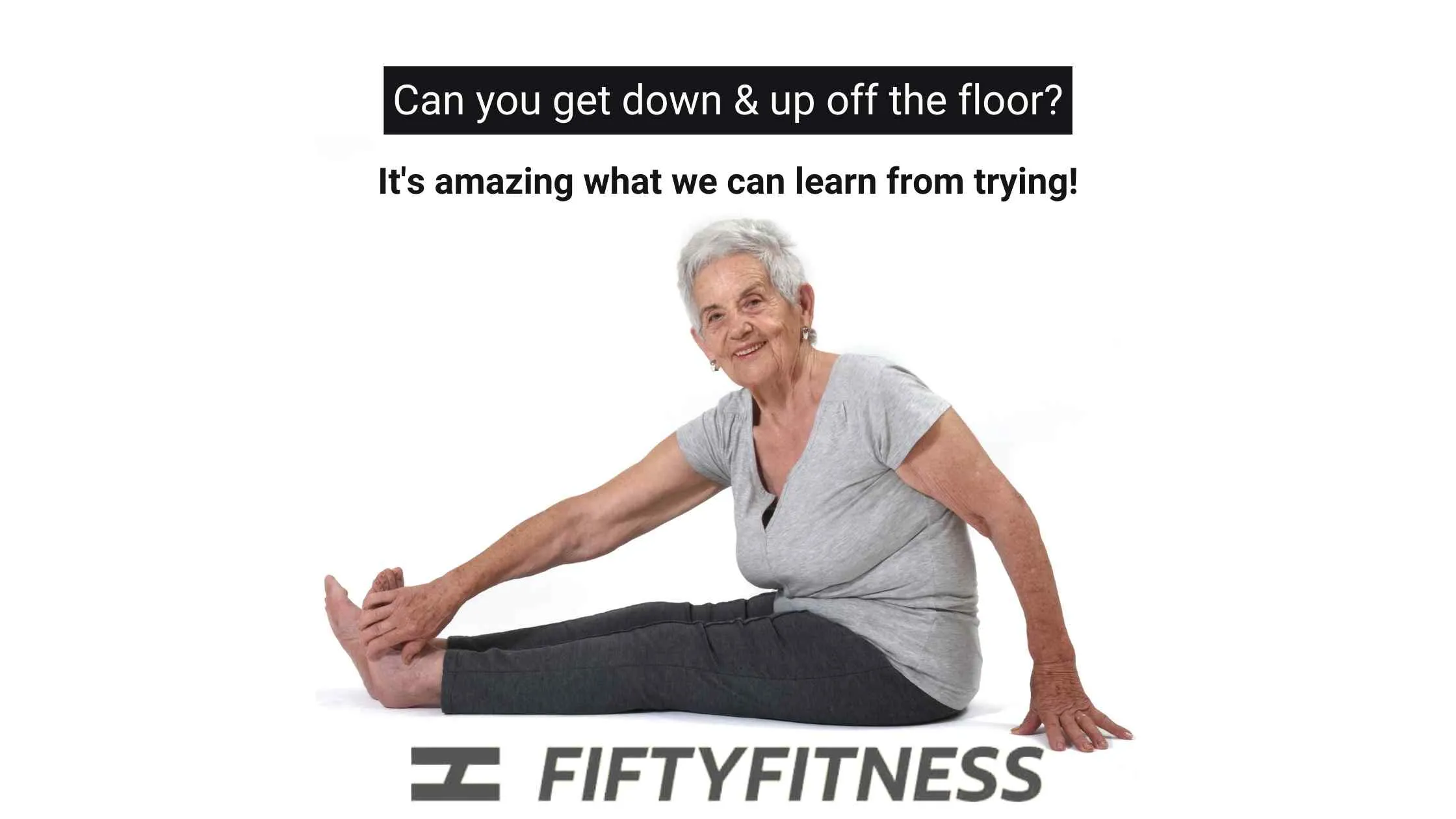
A most thought-provoking book
One of my most recent reads is Built to Move by Kelly Starrett and Juliet Starrett.
I feel compelled to share this book with you because it’s taught me so much.
In this article I review the first chapter – a summary of what it’s about, and what I’ve learned about my own mobility.

Ten essential habits
Here’s a link to the authors’ website, The Ready State, with all the info about the book.
Note the subtitle – THE 10 ESSENTIAL HABITS TO HELP YOU MOVE FREELY AND LIVE FULLY.
The ten essential habits are linked to ‘vital signs’ and there’s a chapter for each one.
Vital sign 1 is getting down and up off the floor and we can assess this sign by doing the ‘sit and rise’ test.
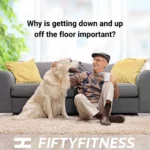
Why is getting down and up off the floor important?
The authors describe research that essentially boils down to a link between overall well-being and our ability to easily get down on the floor and back up again.
The test gauges the following attributes, which are all components of this movement.
- Hip range of mobility
- Leg strength
- Core strength
- Balance
- Coordination
Amazing that we can assess so many things by testing our ability to sit on the floor and get back up.
Preparing for the ‘sit and rise’ test
The standard to aim for is being able to get down and up from the floor without any assistance.
However, there is no shame if you need to brace somehow to get down or up or both.
If we can get up off the floor, that’s great!
To do the test, wear comfy non-restrictive clothing with nothing on your feet.
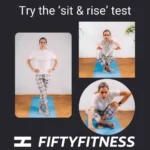
Doing the ‘sit and rise’ test
Stand with feet crossed and sit down on the floor into a cross-legged position.
Then reverse the process to get up without placing hands or knees on the ground.
Don’t worry if you need support to go in either direction, just notice where you’re at and what you need to do to sit and rise.
The authors recommend trying the test every day and they provide lots of information about how to improve.
How to improve
In a nutshell, spend more time sitting on the floor in different positions.
By spending more time on the floor, we can get more practice at getting up unassisted.
And floor sitting compensates for some mobility problems that can crop up from prolonged chair sitting.
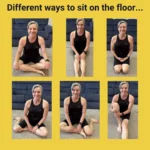
Different ways to sit on the floor
The advice to sit on the floor more often comes with plenty of suggestions on how.
These suggestions are included in the book with great illustrations.
- Cross-legged
- 90/90 sitting
- Long sitting
- One leg up sitting
And we can mix it up and change positions while we give floor sitting a go.
How did I do?
I can get down from standing and into the cross-legged position on the floor pretty well.
Sometimes I plonk the final few centimetres, but I don’t need to use any props to get down on the floor.
Getting back up is a different story though.
To rise I need to put one hand down on the ground to push off the floor.
Here’s a video of me doing the test.
When can I sit on the floor?
I get down and up off the ground multiple times during my own exercise sessions and demonstrating floor exercises to clients, but I rarely just sit on the floor.
Reading about ‘Vital Sign 1’ has been a real eye-opener and I’m motivated to spend more time floor sitting.
It’s going to take a bit of work to develop new habits though.
One approach will be to select a task that I do daily and sit on the floor while I do it.
The other day I sat on the floor while reading and writing some notes to prepare this article.
Foregoing the couch for the floor during the nightly veg out in front of the telly is an easy option.
I’m a regular tea drinker, so maybe I can sit on the floor while I sip…
What I’ve learned from sitting on the floor
Sitting cross-legged on the floor hurts my hips! I was a little shocked at how much.
However, it felt better after a little while relaxing into the position and resting my back against the couch or a wall.
So far, I can only sit cross-legged for 5 – 10 minutes and when I change positions or get up off the floor, my hips are stiff!
To spend about 30 minutes on the floor I need to move into different positions – long sitting and one leg up sitting are easier and give me a break before trying crossed legs again.
For me this a sign that I need to sit on the floor more often and preserve my hip mobility with the cross-legged position.
I’m curious to see if it gets easier for me.
Mobilisations
Another aspect of the advice in Built to Move is mobilisations.
These are practices that help us move our joints into positions that utilise their full range of motion and release soft tissues that may have become tight or tense.
Mobilisations can also work with the nervous system to help us move.
If you check out the book you will see there are very accessible mobilisations that will help us improve on Vital Sign 1.
Give it a try
I’ve been talking to my clients about the sit and rise test and all of us have been giving it a go.
It’s very enlightening and I encourage everyone to give the test and floor sitting a go.
If you’re looking for ways to get started with increasing your movement, check out all the resources I have on my website.
Free resources at fiftyfitness.com.au
Did you know that I have a bunch of FREE resources on my website?
I’ve developed them to help over 50s get started or return to exercise.
You’ll find a workbook with 10 things to consider when you’re considering exercise.
There’s a home workout that requires no equipment.
And TWO video series. One to help you develop a daily warm up routine. The other provides tips on how to care for your pelvic floor while you workout.
So much goodness available for FREE!
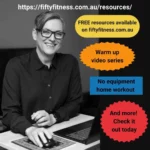
Keep in touch
Please reach out to me if anything in this article resonates with you.
You can email me at kate@fiftyfitness.com.au or connect via social media.
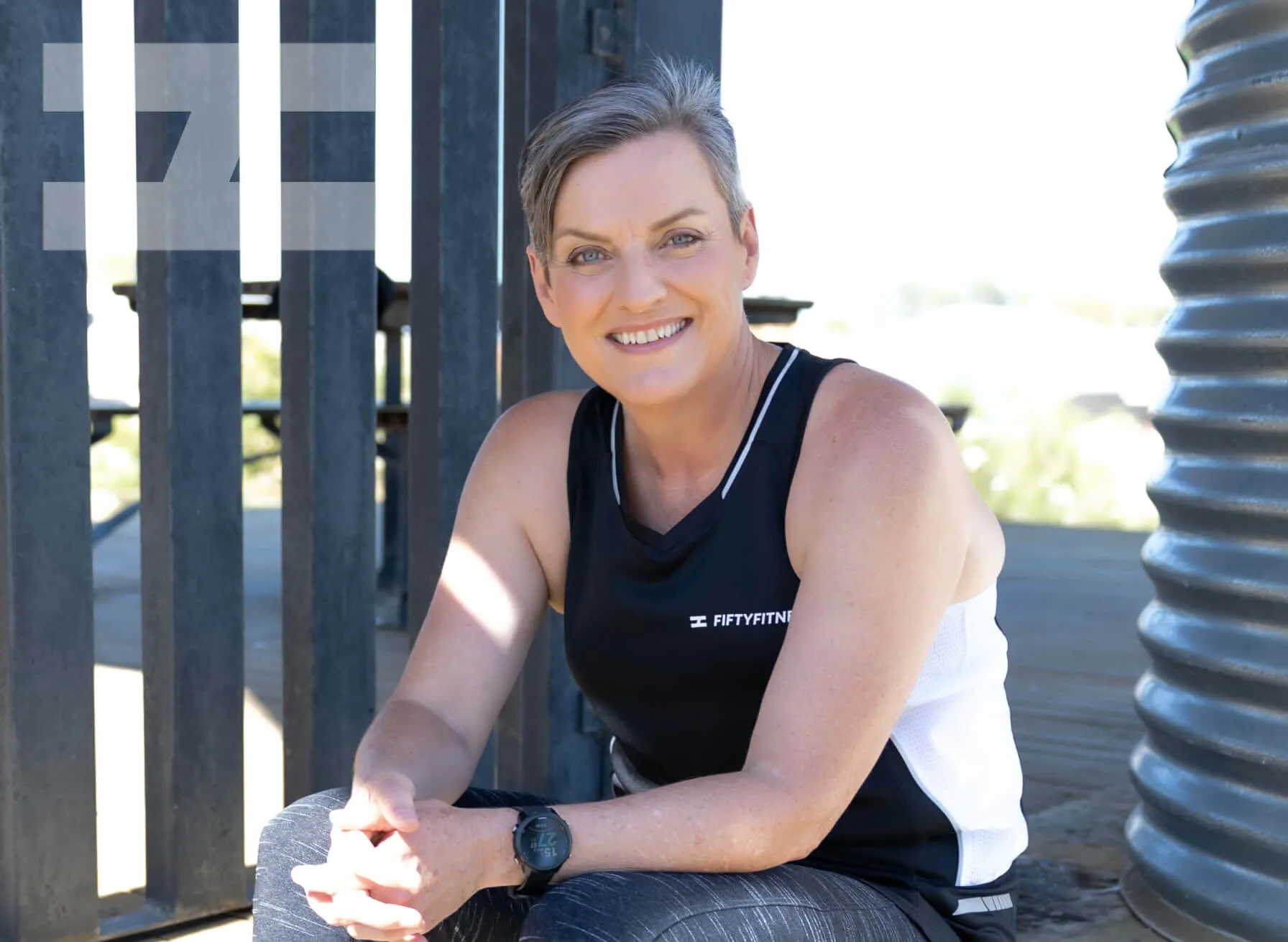
Subscribe now
Blog Subscription Form
A blog subscription form, used for the blog page and posts.
"*" indicates required fields